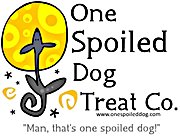As pet owners, we all want to create a safe, healthy environment for our dogs. One of the hidden dangers that many people overlook is poisonous plants. From the colorful flowers in your backyard to the potted greenery in your living room, there are plenty of plants that can pose a real threat to your dog’s health. Knowing which plants are toxic and taking steps to protect your furry friend is essential. Here is what you need to know to keep your dog safe from poisonous plants.
1. Learn Which Plants Are Harmful
The first step in protecting your dog is knowing which plants could be dangerous. Some plants are highly toxic, while others might only cause mild to moderate reactions depending on how much your dog eats. Here are a few common plants that you should watch out for:
- Oleander: This popular ornamental plant is extremely toxic. Even a small amount can cause severe poisoning, impacting the heart, digestive system, and kidneys.
- Azaleas: These beautiful shrubs contain grayanotoxins that can lead to vomiting, diarrhea, drooling, and even dangerous heart issues.
- Sago Palm: Despite their tropical look, sago palms are among the most dangerous plants for dogs. Eating any part of the plant, especially the seeds, can result in liver failure, seizures, or even death.
- Tulips and Daffodils: These spring favorites contain toxins that can cause vomiting, diarrhea, and excessive drooling.
- Lilies: While lilies are especially harmful to cats, they can also make dogs very sick, leading to vomiting, lethargy, and kidney problems.
- Autumn Crocus: This seasonal flower can cause serious digestive issues and kidney damage if eaten.
- Ivy: Varieties like English Ivy can cause stomach upset and tiredness in dogs.
This list covers some of the most common offenders. If you are ever unsure whether a plant is safe, it is always best to double-check online or ask your vet.
2. Make Your Home and Garden Safe
Once you know which plants are toxic, it is time to do a full check of your home and yard. If you find any hazardous plants, consider removing them, especially if your dog likes to chew on plants or has easy access to your garden.
If you cannot remove the plants or want to keep them, here are a few ways to keep your dog safe:
- Use High Planters: Put plants in hanging baskets or on tall shelves where your dog cannot reach. Make sure the planters are secure so they do not fall over if your dog jumps up.
- Install Garden Fencing: In outdoor spaces, use small fences to block off areas where toxic plants grow. Even if your dog usually ignores plants, it is better to be cautious.
- Choose Safe Plants: If you are planting new flowers, consider switching to non-toxic options like marigolds, sunflowers, or spider plants. They are colorful and much safer for pets.
3. Train Your Dog Not to Eat Plants
Some dogs are naturally curious and love to chew on plants. If your dog tends to nibble, it is important to train them to leave plants alone. Start by using firm commands like “leave it” whenever they show interest in a plant, and reward them with praise or treats when they listen.
Giving your dog plenty of chew toys and treats can also help. When they have safer options to chew on, they will be less tempted by your plants.
4. Stay Alert During Walks and Outdoor Time
Even if your home and yard are safe, you still need to be cautious when you are out and about. Parks, trails, and even neighbors’ gardens can hide toxic plants.
- Stick to Trails: When hiking, stay on the paths where it is easier to spot and avoid harmful plants.
- Keep Your Dog Leashed: Using a leash helps you control where your dog goes and what they sniff or chew.
- Inspect Your Yard Often: Wild plants can pop up quickly. Make a habit of checking your yard regularly for any new growth that could be dangerous.
5. Recognize the Signs of Poisoning
Even with the best precautions, accidents can happen. Knowing the signs of plant poisoning could save your dog’s life. Watch for symptoms like:
- Vomiting or diarrhea
- Excessive drooling
- Weakness or tiredness
- Loss of appetite
- Shaking or seizures
- Trouble breathing or irregular heartbeat
- Swelling or redness around the mouth
If you notice any of these signs and suspect your dog ate something toxic, contact your vet immediately. Having a sample of the plant or a photo can help the vet figure out the best treatment quickly.
6. What to Do If Your Dog Eats a Poisonous Plant
While you wait for veterinary help, there are a few first-aid steps you might take, but only under professional advice:
- Inducing Vomiting: Sometimes vets will guide you to induce vomiting if the ingestion was very recent. Never attempt this without checking with a vet first.
- Activated Charcoal: In some cases, your vet might suggest using activated charcoal to help absorb the toxins. Follow their instructions closely.
Always call your veterinarian before trying any first-aid measures, as different plants can require very different treatments.
Conclusion
Keeping your dog safe from poisonous plants takes a mix of awareness, training, and good habits. By learning which plants are dangerous, securing your home and garden, teaching your dog to avoid plants, and staying alert during outdoor adventures, you can protect your dog from many common dangers. And if something does go wrong, knowing what to look for and acting quickly can make all the difference. With a little extra care, you can create a safe environment where your dog can thrive.
